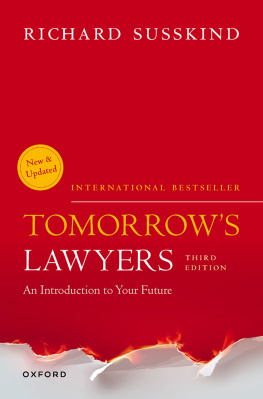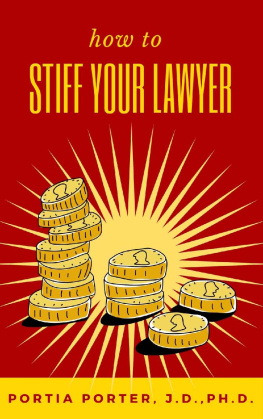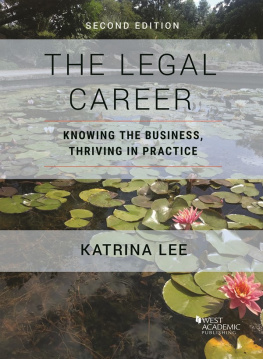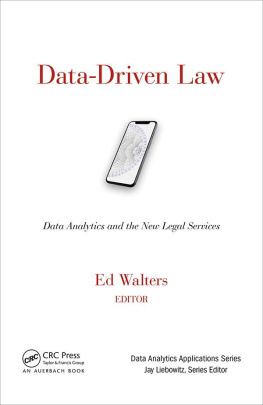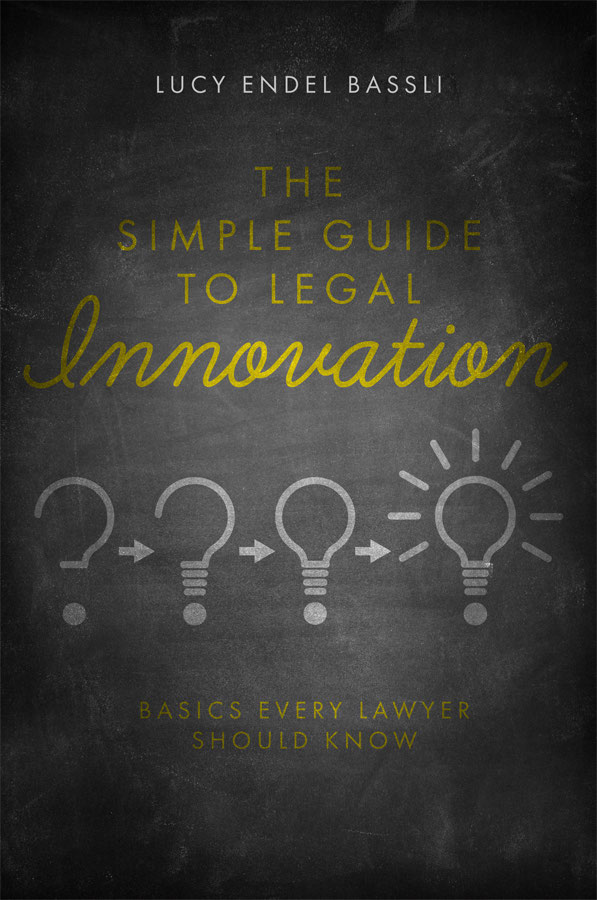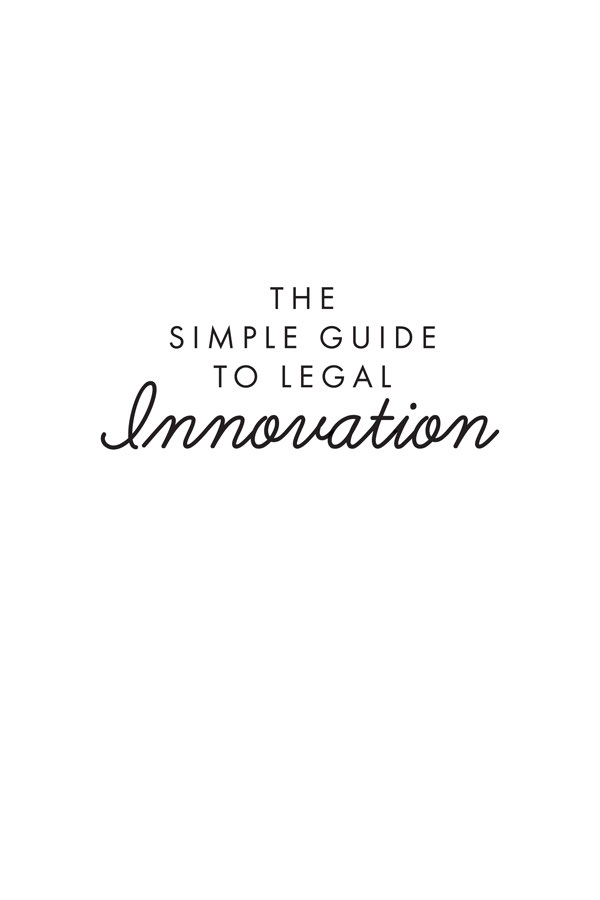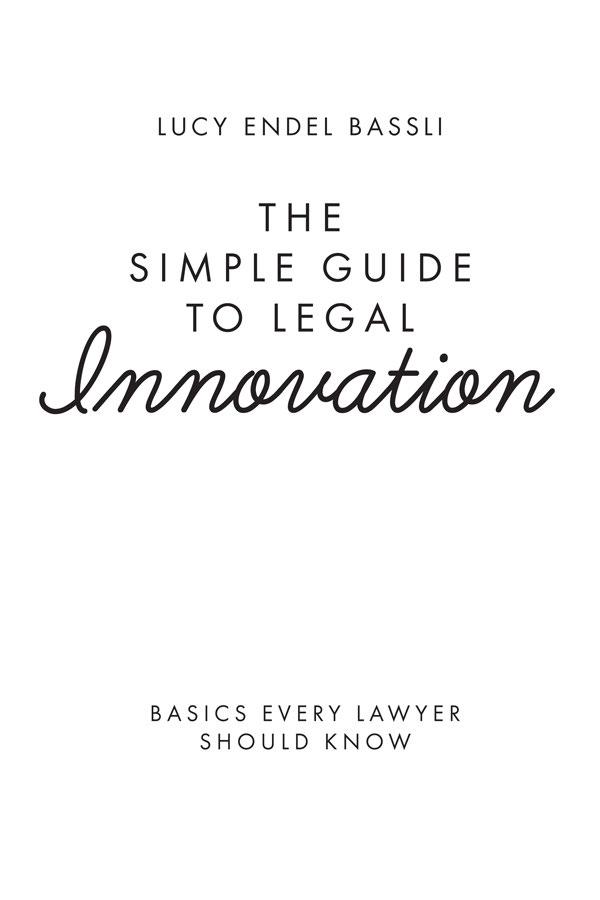Cover design by Tahiti Spears/ABA Design.
The materials contained herein represent the opinions of the authors and/or the editors, and should not be construed to be the views or opinions of the law firms or companies with whom such persons are in partnership with, associated with, or employed by, nor of the American Bar Association or the Section of Tort, Trial, and Insurance Practice unless adopted pursuant to the bylaws of the Association.
Nothing contained in this book is to be considered as the rendering of legal advice for specific cases, and readers are responsible for obtaining such advice from their own legal counsel. This book is intended for educational and informational purposes only.
2020 American Bar Association. All rights reserved.
No part of this publication may be reproduced, stored in a retrieval system, or transmitted in any form or by any means, electronic, mechanical, photocopying, recording, or otherwise, without the prior written permission of the publisher. For permission contact the ABA Copyrights & Contracts Department, copyright@americanbar.org, or complete the online form at http://www.americanbar.org/utility/reprint.html.
Library of Congress Cataloging-in-Publication Data
Names: Bassli, Lucy Endel, author. | American Bar Association. Tort Trial and Insurance Practice Section, sponsoring body.
Title: The simple guide to legal innovation / Lucy Bassli.
Description: First edition. | Chicago : American Bar Association, 2020. | Includes index. | Summary: Educational needs of practicing lawyers are explored with a practical guide provided. Details the legal ecosystem and how its complex, varied and often overlapping parts can and should be handled by practicing attorneys, alternative legal service providers and non-legal professionalsProvided by publisher.
Identifiers: LCCN 2019048125 (print) | LCCN 2019048126 (ebook) | ISBN 9781641055871 (hardcover) | ISBN 9781641055888 (epub)
Subjects: LCSH: Practice of lawUnited States.
Classification: LCC KF300 .B377 2020 (print) | LCC KF300 (ebook) | DDC 340.068dc23
LC record available at http://www.lccn.loc.gov/2019048125
LC ebook record available at http://www. lccn.loc.gov/2019048126
Discounts are available for books ordered in bulk. Special consideration is given to state bars, CLE programs, and other bar-related organizations. Inquire at Book Publishing, ABA Publishing, American Bar Association, 321 N. Clark Street, Chicago, Illinois 60654-7598.
http://www.ShopABA.org
Contents
How to Read this Book:
If you are methodical and like big-picture storytelling, read the book in the order it is written.
If you want to get to the main point and be ready for a cocktail conversation about legal innovation, then, after reading Part I for general background, skip to Part III for the meat of the book.
With countless articles and blogs on legal innovation, it is nearly impossible for attorneys to keep up. Were already stretched thin trying to negotiate deals, go to court, manage the business, build new client relationships, and stay abreast of the changes in substantive areas of law. And just as we think were finally getting a grip on it all, the legal industry decides to wake up from its decades-long slumber, opening its blurry eyes to a rapidly changing economy thats being driven by a technology-powered workforce.
Should lawyers be expected to read every sensational article about robots taking over their jobs? Should lawyers become experts on block-chain? Or perhaps become certified in legal project management, or train to code software? Absolutely not! Such goals may be highly unrealistic, but every lawyer should be aware of these concepts. Lawyers need an appreciation of what is happening in the legal industry, who the key players are, the role that technology plays, and how these factors are changing the nature of legal services delivery.
Clients are demanding new and different services such as asking for project management assistance, alternative pricing structures, and lower cost resources. They want more value from their firms, and they want their firms to come up with ideas. Firms are responding by hiring a variety of professionals in other disciplines, including data science, project management, knowledge management, and solution architecture, as examples. Professionals in these fields are largely frustrated, however, because the practicing lawyers still need convincing about the benefits of their services. If, however, practicing attorneys understood the value and could articulate the benefits that other professionals bring, they would need no convincing and clients would be the beneficiaries.
Many lawyers are simply unaware of the revolution that is happening, adding further tension to the precious billable hour, with new players offering enticing solutions and technology playing a larger role each day. Unfortunately, many practicing lawyers continue to focus on their billable hours and rely on the personal nature of their client relationships, ignoring data, clients needs (not stated wants, but actual needs), and the inevitable future of the law practicea practice that has been largely unchanged for decades.
In this book, I explore the educational needs of practicing lawyers and provide a practical guide for lawyers who want to differentiate themselves. This type of education falls somewhere into a gap between traditional continuing legal education (CLE) topics, and the training and development that most law firms provide to their attorneys to develop professional (usually, soft) skills.
I explore in some detail the legal ecosystem and how its complex, varied, and often overlapping parts can and should be handled by practicing attorneys, alternative legal service providers (ALSPs), and non-legal professionals.
Lawyers are often unaware of the developing resources available, even if their own firm has them. They are not sure how to leverage these resources, when to engage them, for what kinds of work, or how to sell them to their clients.
This book has three main sections: introduction; followed by foundational chapters on the legal education landscape, the rise of legal operations (or legal ops), the legal ecosystem, women and innovation; and lastly practical chapters on the top concepts that lawyers need to know. It is targeted toward commercial attorneys at midsize to large firms, because it is written from my personal perspective and experiences.
The good news: lawyers can continue to learn well into their years of practice! With some updated vocabulary and a few real examples (the examples in this book come from my corporate experience, not consumer or legal aid services sectors) lawyers can learn to wow their clients, enticing them to try something new.
This book will help them on that journey.
So who am I and why should you care about my thoughts on legal innovation? I was a regular lawyer (just like you, reader). Im not a coder or a Silicon Valley startup founder. I came to innovation through being annoyed with the inefficiencies and volume-based challenges I encountered in my work lifeand by recognizing that there were better ways of doing things and that I could make an impact. I have experience in both small and large firms as well as in small and large corporations. I have background as a legal tech solutions provider, as part of a high-growth startup corporate legal team, and also as a consultant who was active in several parts of the legal ecosystem. This section details my journey and some key lessons I learned early on that helped me become an innovative lawyer.


